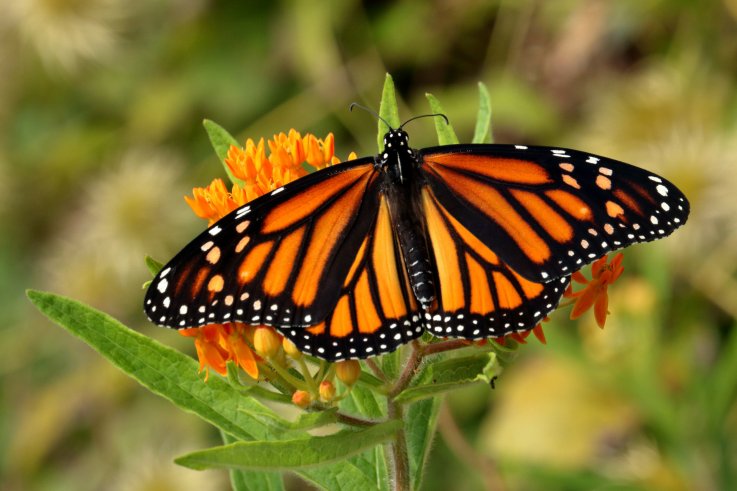Butterfly populations in Ohio have dropped by over a third in the past two decades, scientists have revealed.
Each year since 1996, overall populations of the 81 butterfly species looked at in the study published in the journal PLOS ONE dropped by an average of 2 percent, or 33 percent in total. Three times as many species are seeing populations fall compared with those experiencing positive trends.
In the biggest ever insect monitoring program carried out in North America, the team looked at data collected weekly by volunteers in 24,405 butterfly surveys. The citizen scientists monitored 104 sites between the months of April to October, from 1996 to 2016. The 116,100 km2 of land over which the Midwestern state stretches provides a variety of habitat types, from prairie-like areas to mountains and forest.
Tyson Wepprich, a co-author of the study who researches insect populations at Oregon State University, told Newsweek: "There is a lot of worry about insect declines, but very little data outside of a few long-term monitoring programs in Europe. We use the best systematic monitoring dataset for insects in North America to estimate the rate of change in butterfly abundance."
The Monarch butterfly was found to be the only migratory species in decline, the team found. Forty of the species saw no significant change.
Climate change, as well as the degradation of habitats and changes to farming methods, could explain the drop, the authors wrote.
"Species with more northern distributions and fewer annual generations declined the most rapidly," Wepprich explained in a statement. This could be because they can't withstand the heat as temperatures in Ohio rise.
The findings add to an already bleak outlook for insects, as past research on 452 species suggests numbers have dropped by 45 percent globally over the past 40 years.
Past studies have shown the migratory eastern North American monarch has declined by more than 85 percent, while the western North American monarch has dropped by more than 95 percent. Wepprich said in a statement some of the rarest butterflies are among those falling sharply.
Butterflies provide a useful insight into the threats faced by insects in general, as they contend with the same pressures from factors like climate change and habitat loss. And as most people like butterflies more than other insect species, it is easier to ask the public to take part in monitoring programs, the authors explained.
The drop is similar to the rates found in the UK, Netherlands, and Spain, Wepprich told Newsweek.
"Although these declines are not as drastic as others being reported recently, this monitoring program is built to detect abundance changes and shows that insect declines are not just something to worry about in Europe," he said.
Wepprich told Newsweek it is tough to estimate trends in populations because insect counts fluctuate depending on the season they are active, the flowers that happen to be in bloom that week, or by the weather in a particular year being good or bad for the population.
"We overcame this problem by using statistical methods that have been developed by researchers for other monitoring programs," he said.
"I was surprised that some common species that are adapted to live in human-dominated habitats, like agricultural or urban areas, were declining," said Wepprich.
"Usually people wouldn't worry about insect pests, like the Cabbage White, but we think this shows that the populations of some of the hardiest butterfly species may be affected by environmental changes."
Highlighting the limitations of the work, Wepprich said the team didn't have the data to uncover how other insects are faring in Ohio, and whether the trends would apply to other parts of the world.
Wepprich urged decision-makers to think of insects when they plan public spaces like parks, farmland, roadsides, school grounds and other public areas where planting native flowers and food plants can be done over large areas at a time.
While those actions would have a larger impact than anything individuals can do, Wepperich said he still avoids using pesticides in his yards and has replaced some grass with native plants.
"I'm enjoying seeing native bees and other pollinators visit. Especially in urban areas, these small patches can benefit butterflies and other insects more than grass lawns," he said.

Bagikan Berita Ini














0 Response to "Butterfly Death: Ohio Butterflies Are Dying As Monarchs, Rare Species, Decline by a Third in Two Decades - Newsweek"
Post a Comment